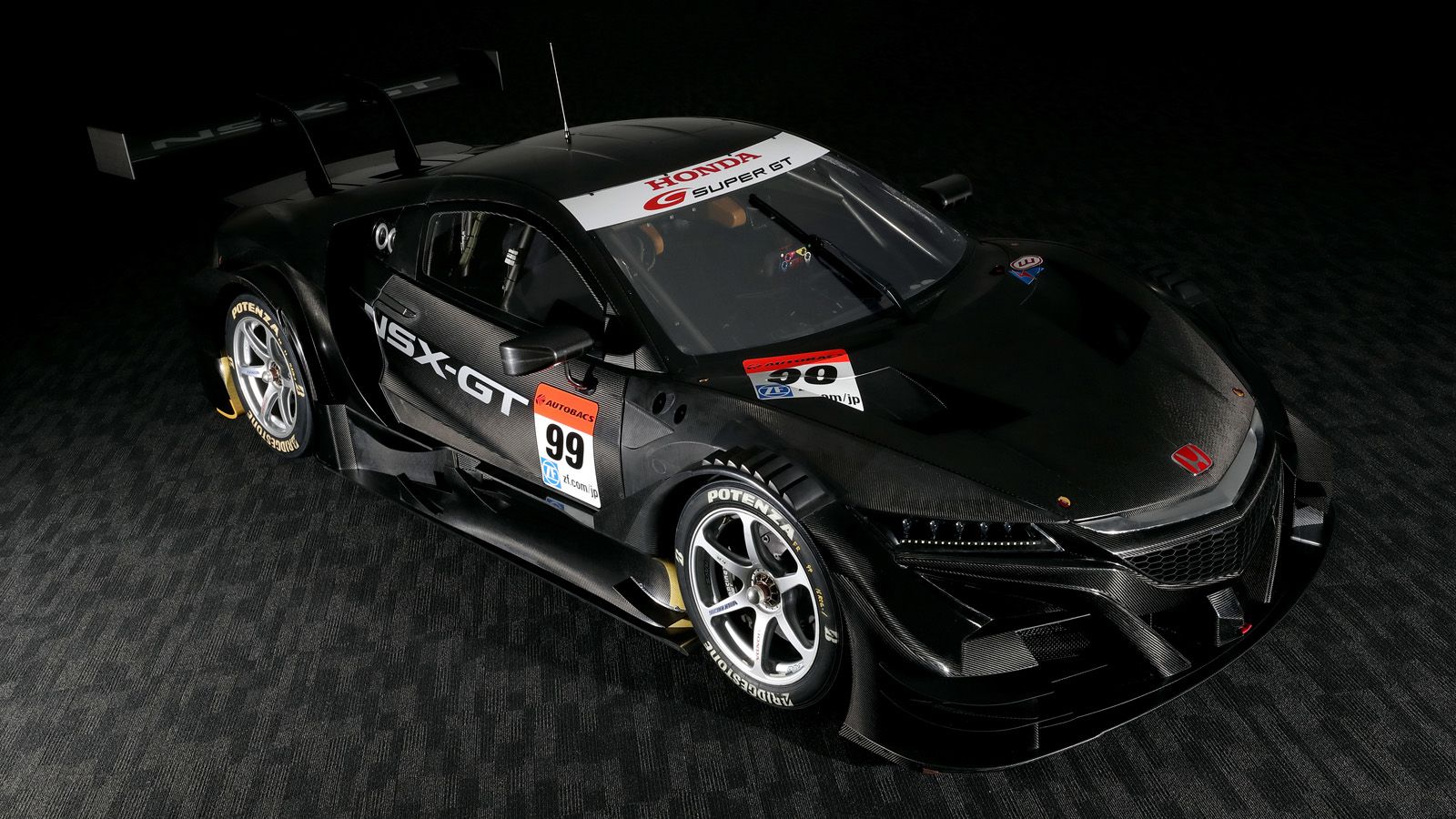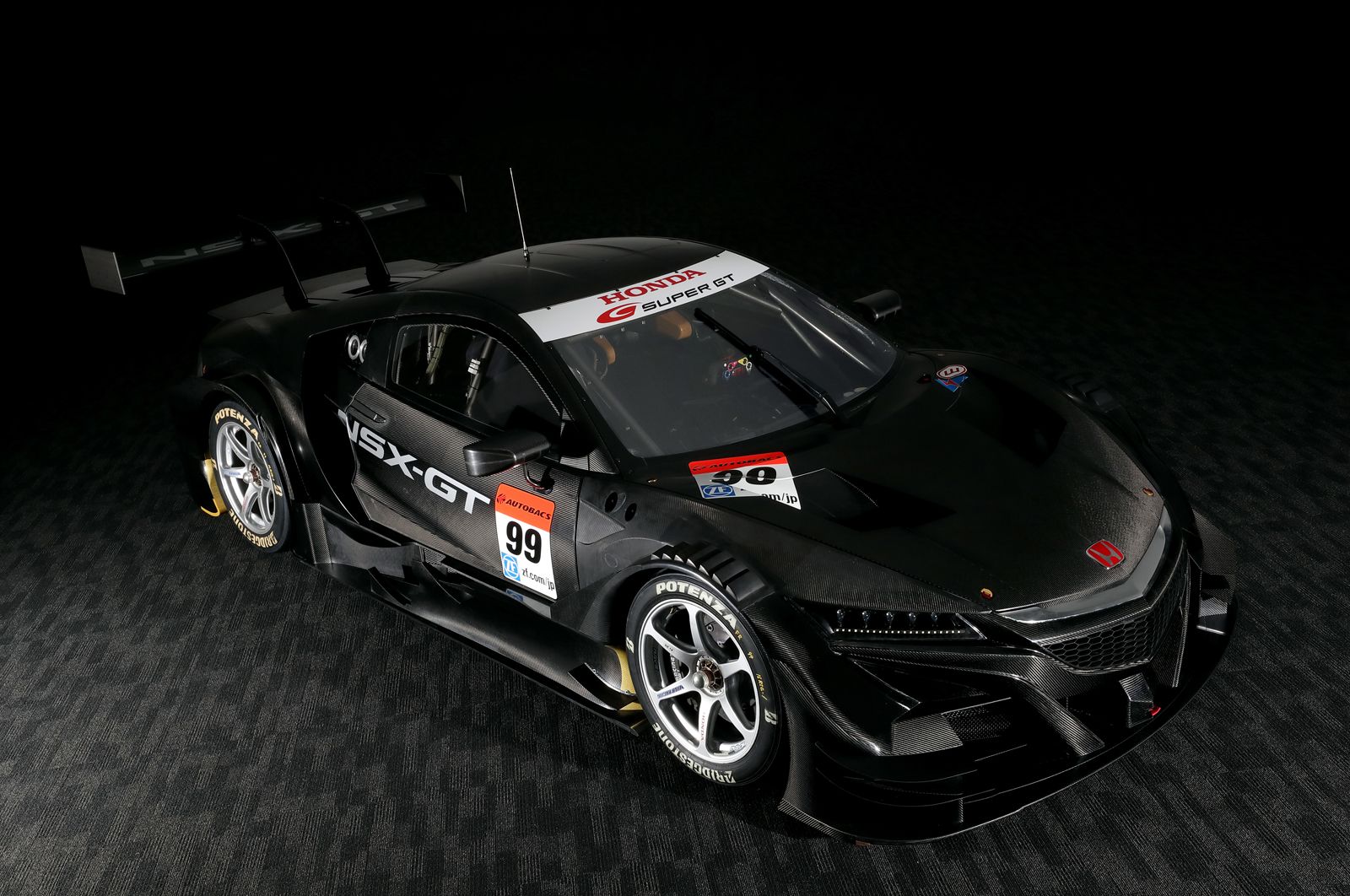The second-generation Acura NSX (Honda NSX outside the U.S.) made its global debut at the 2015 Detroit Auto Show and entered production much later, in May 2016. Even though the actual road car was launched for the 2017 model year, it was preceded by a concept car in 2014 and was advertised as early as 2012. In 2014, the first NSX hit the track in Japan, in the form of a GT500-spec racer for the Super GT series.
Essentially a beefed-up version of the road car with a comprehensive aero kit to help with downforce and cornering, the Honda NSX-GT replaced the HSV-010 GT, which in turn replaced the first-generation NSX. Honda's new race car scored its first win during its maiden season, but ended 2014 with only two victories in a championship dominated by Nismo. A similar scenario followed in 2015, with Autobacs Racing Team Aguri and Team Kunimitsu bringing Honda two wins. Nismo once again won the championship with the Nissan GT-R.
In 2016, things took a turn for the worse, with the Honda NSX-GT failing to win during the six events of the season. With two races left on the calendar by the end of the year, Honda has already unveiled a new car for the 2017 season. Although based on the same NSX, the revised race car brings significant changes on the outside, mainly due to the new regulations introduced for 2017. Join me in my review to find out what sets the new NSX-GT apart from its forerunner.
Continue reading to learn more about the 2017 Honda NSX-GT.
2017 Honda NSX-GT
- Make: Array
- Model: 2017 Honda NSX-GT
- [do not use] Vehicle Model: Array
Exterior
Although the new NSX-GT doesn't seem to be all that different compared to the outgoing race car, there are quite a few changes to talk about. Up front, the most significant alteration is the length of the splitter, which has been reduced dramatically from 100 to 50 mm (3.93 to 1.97 inches) under new Super GT regulations. The race car also sports a revised "Acura beak" grille, as well as a reshaped bumper. The latter includes larger intakes, both under the headlamps and grille. The V-shaped nose is also more pronounced thanks to the larger winglets that flank the center section of the bumper and extend toward the fenders right under the headlamps.
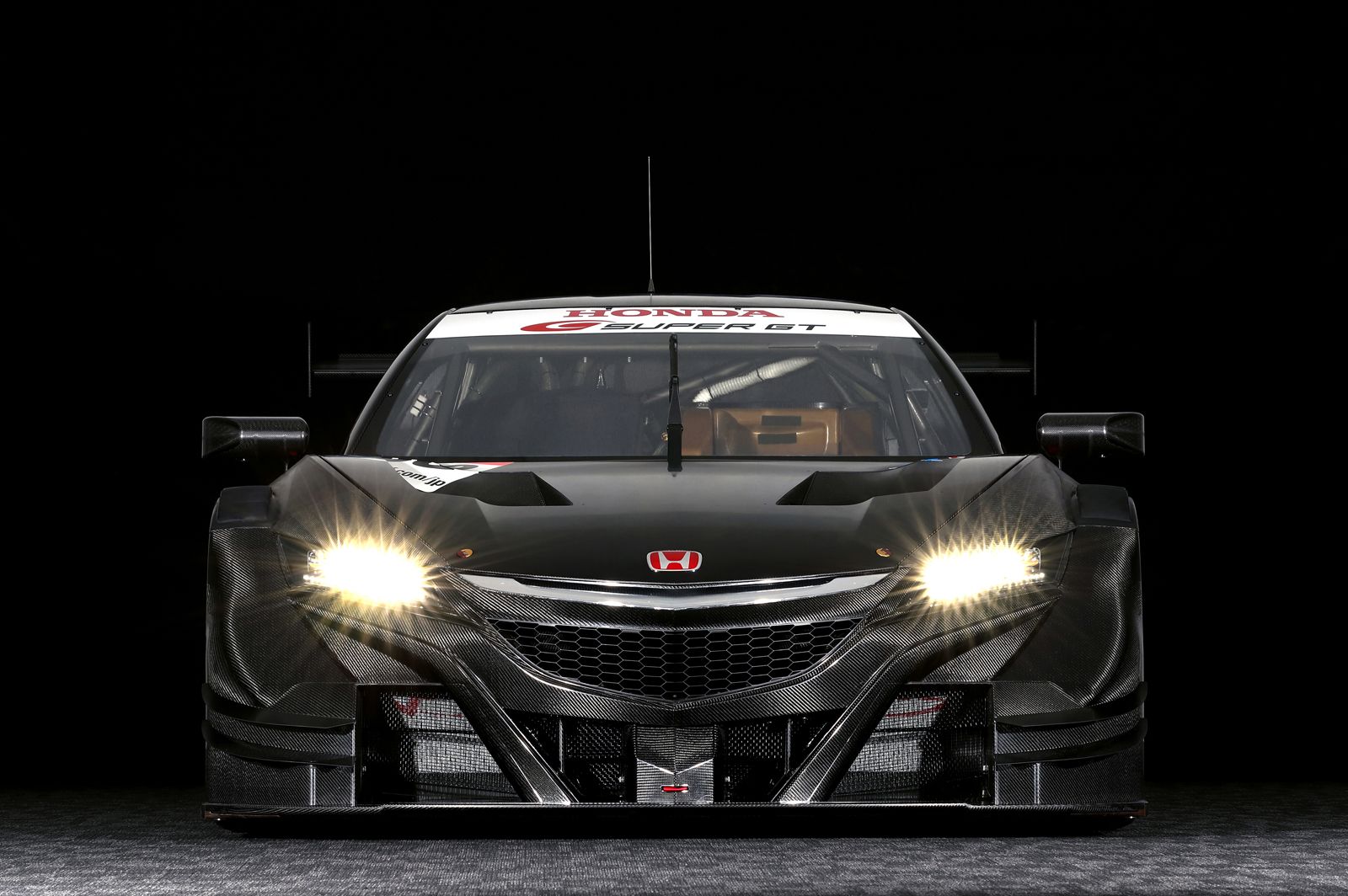
|
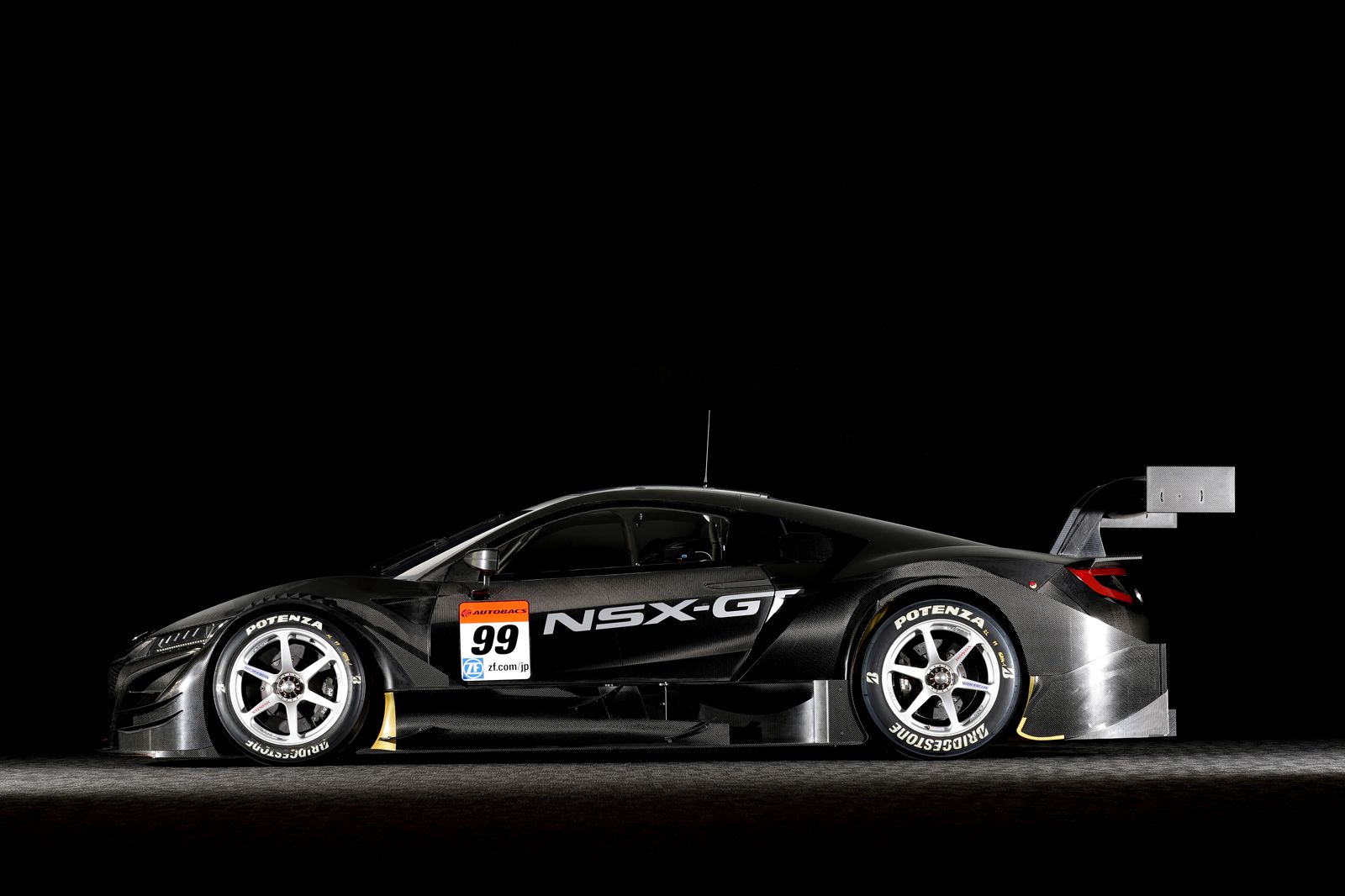
|
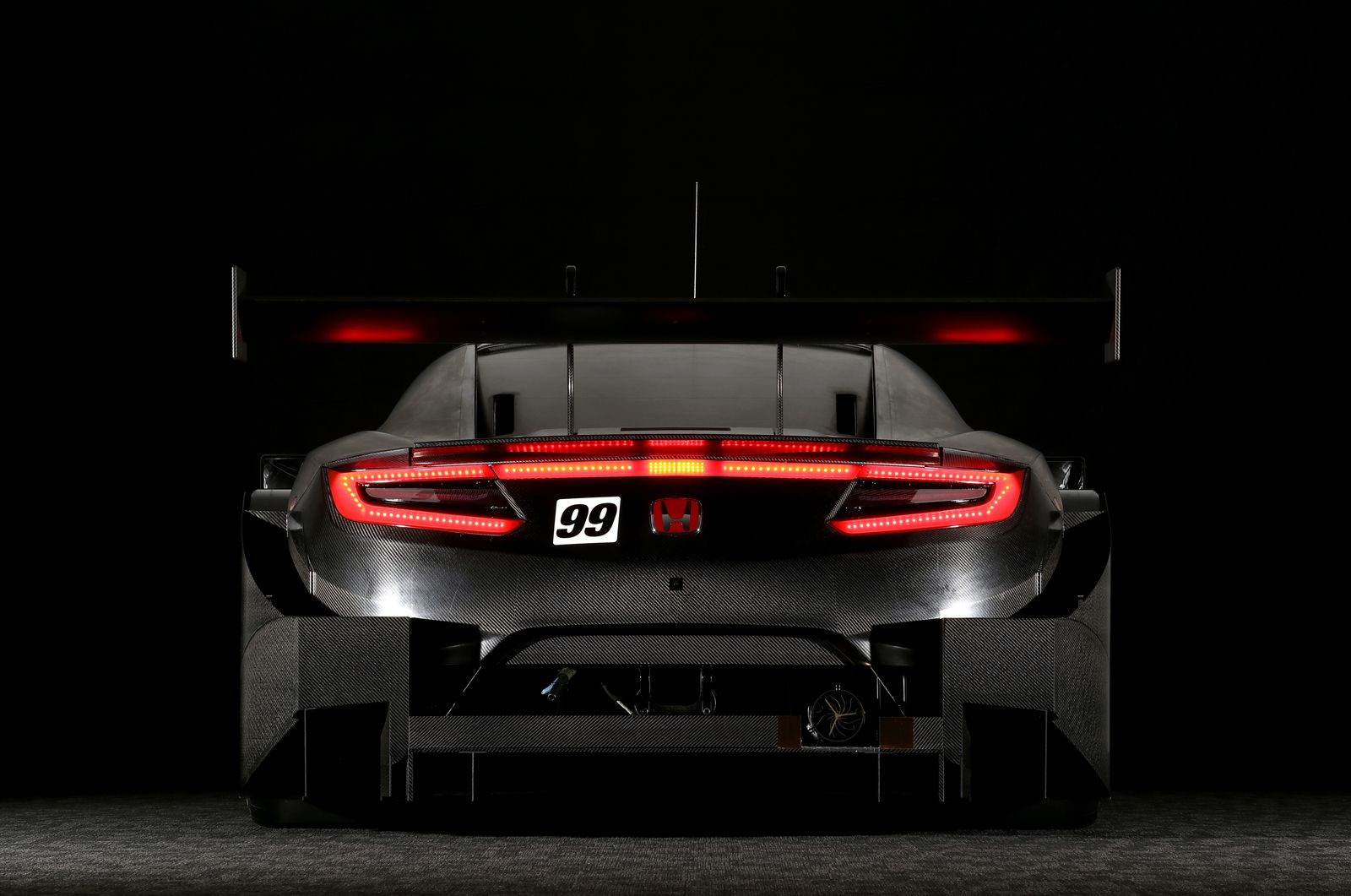
|
Around back, there are two major modifications as a result of new Super GT rules. First up, the height of the rear diffuser has been reduced by more than 50 percent, from 206 to 101 mm (8.11 to 3.97 inches). The new diffuser means that the amount of downforce generated underneath the car, as well as the amount of turbulent air generated from the rear of the car, will be reduced. On the flipside, the rear wing is longer, now measuring 1,900 mm instead of 1,390 (74.8 instead of 54.7 inches). Previously used at the Fuji Speedway, the 1,900mm wing is now the standard element for all circuits on the Super GT calendar.
Along with the new diffuser and wing also comes a redesigned bumper. The unit is now shorter and lacks the square vents at the corners, while the center-mounted intakes have been eliminated. The side view also showcases revised aerodynamics. The side skirts and front fenders gained additional winglets, while the rear fenders are wider. The race car also sports new side mirrors, likely redesigned for improved aerodynamics.
Interior
As it is the case when it comes to race cars, there aren’t any photos of the interior. However, based on previous GT500-spec cars and Super GT series regulations, it’s safe to assume that the NSX-GT's interior is a big departure from the standard road car, missing all of the fancy features you'd find in the production model. The dashboard is likely the only feature that remains in place, but its lower section was removed to make way for a new center tunnel and a carbon-fiber center stack. The latter houses most of the car’s race-spec switches and knobs, as well as the display that provides all the important data during the race.
Note: Standard Acura NSX interior shown here.
The instrument cluster also received some changes in order to incorporate some more race information vital to the driver, while a lighter steering wheel wrapped in Alcantara replaces the more intricate wheel in the road car. Naturally, the standard seats were ditched in favor of a race-spec, Recaro driver’s seat with a multi-point harness. Lightweight door panels, a rollcage, and a fire extinguishing system round off the race-ready cockpit.
Drivetrain
While the road-going model gets its juice from an intricate hybrid drivetrain that brings together a twin-turbo, 3.5-liter V-6 and no fewer than three electric motors, the NSX-GT keeps things simple under the hood with a 2.0-liter four-cylinder. Essentially an evolution of the previous unit, the turbocharged four-pot is water-cooled and uses direct injection, a dry sump lubricating system, and drive-by-wire throttle control. Honda says it can generate more than 600 horsepower, but this figure pretty much depends on the curb weight of the vehicle.
Note: Standard Acura NSX drivetrain pictured here.
The transmission is a constant mesh unit operated by paddle shifters mounted behind the steering wheel. Speaking of steering, it's a rack-and-pinion unit. Both front and rear suspension systems use a double wishbone layout and both have torsion bar stabilizers. Stopping power comes from hydraulic, ventilated carbon discs at all four corners.
There's no word on specific performance figures, but Super GT500 cars are usually very fast. The NSX-GT should have no trouble hitting 60 mph from a standing start in less than three seconds and hit a top speed of at least 190 mph.
Prices
There's no word on pricing yet, but we do know for a fact that the NSX-GT will be sold to private race teams. In 2016, no fewer than five teams raced the Honda and it's safe to assume that interest in the company's new race car is still high.
Competition
Nissan GT-R Nismo GT500
For many years now, the GT500 class has been disputed by three automakers. Nissan is one of them and its Nismo-prepped GT-R GT500 has been dominating the series since 2011. The GT-R made its debut in Super GT in 2008, when it replaced the previous race-spec Fairlady Z. After winning its maiden season, the GT-R went on to grab first spot in four out of five championships between 2011 and 2015, and it's on its way to win again in 2016. Needless to say, the GT-R will remain competitive for 2017 and is the car to beat for Honda.
Find out more about the Nissan GT-R Nismo GT500 here.
Lexus LC500 Super GT500
Developed for the 2017 season, the LC500 Super GT500 is also brand-new and replaces the RC F in the series. Based on the new LC500, which is larger than the RC, Lexus' brand-new GT500 racer was built to comply with the latest Super GT regulations and looks almost as menacing as the NSX-GT. Much like Honda, Lexus hopes to finally defeat the GT-R, which is on its way to winning its third championship in a row. The last time Nissan lost the Super GT500 series was in 2013, when Lexus won with the SC430. Granted, the LC500 can only be an improvement over the outgoing RC F and a solid competitor for the NSX-GT.
Learn more about the Lexus LC500 Super GT500 here.
Conclusion
It's way too early to draw a conclusion here, but Honda definitely needed a new weapon against the GT-R and the revised NSX-GT might stand a better chance against the Nismo. With the Japanese federation having changed the rules for 2017, the upcoming season will be interesting to say the least. Significant changes of regulations usually bring a lot more excitement to racing and a shake up to statistics, as most teams need time to regain their previous pace. Some get there after a few races, others don't, and it will be interesting to see how the new aerodynamics affect the Super GT.

